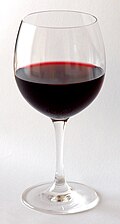Standard drink
Standard drink is a unit of measurement for alcohol. It is used to quantify the amount of pure alcohol (ethanol) contained in a beverage. The concept of a standard drink varies from country to country, depending on the national health authority's guidelines.
Definition
A standard drink is a measure of alcohol consumption representing a hypothetical beverage which contains a specified amount of pure alcohol. The standard drink is used in many countries to quantify alcohol intake. It is usually expressed in grams or milliliters of pure alcohol.
International definitions
The definition of a standard drink varies significantly from country to country. For example, in the United States, a standard drink contains 14 grams (0.6 ounces) of pure alcohol. This is roughly equivalent to 1.2 tablespoons. In contrast, in the United Kingdom, a standard drink, also known as a unit of alcohol, contains 8 grams (0.3 ounces) of pure alcohol.
Health implications
The concept of a standard drink is used in alcohol research and health education. It provides a consistent measure of alcohol consumption, allowing comparisons across different types of alcoholic beverages. However, it is important to note that the actual amount of alcohol consumed can vary greatly depending on the size and strength of the drink.
See also
- Alcohol by volume
- Alcohol equivalence
- Alcohol and health
- Alcohol laws of the United States
- Alcohol units
- Alcoholism
- Blood alcohol content
- Drinking culture
- Short-term effects of alcohol consumption
- Long-term effects of alcohol consumption
| Alcohol | ||||||||||
|---|---|---|---|---|---|---|---|---|---|---|
|
Transform your life with W8MD's budget GLP-1 injections from $125.
W8MD offers a medical weight loss program to lose weight in Philadelphia. Our physician-supervised medical weight loss provides:
- Most insurances accepted or discounted self-pay rates. We will obtain insurance prior authorizations if needed.
- Generic GLP1 weight loss injections from $125 for the starting dose.
- Also offer prescription weight loss medications including Phentermine, Qsymia, Diethylpropion, Contrave etc.
NYC weight loss doctor appointments
Start your NYC weight loss journey today at our NYC medical weight loss and Philadelphia medical weight loss clinics.
- Call 718-946-5500 to lose weight in NYC or for medical weight loss in Philadelphia 215-676-2334.
- Tags:NYC medical weight loss, Philadelphia lose weight Zepbound NYC, Budget GLP1 weight loss injections, Wegovy Philadelphia, Wegovy NYC, Philadelphia medical weight loss, Brookly weight loss and Wegovy NYC
|
WikiMD's Wellness Encyclopedia |
| Let Food Be Thy Medicine Medicine Thy Food - Hippocrates |
Medical Disclaimer: WikiMD is not a substitute for professional medical advice. The information on WikiMD is provided as an information resource only, may be incorrect, outdated or misleading, and is not to be used or relied on for any diagnostic or treatment purposes. Please consult your health care provider before making any healthcare decisions or for guidance about a specific medical condition. WikiMD expressly disclaims responsibility, and shall have no liability, for any damages, loss, injury, or liability whatsoever suffered as a result of your reliance on the information contained in this site. By visiting this site you agree to the foregoing terms and conditions, which may from time to time be changed or supplemented by WikiMD. If you do not agree to the foregoing terms and conditions, you should not enter or use this site. See full disclaimer.
Credits:Most images are courtesy of Wikimedia commons, and templates, categories Wikipedia, licensed under CC BY SA or similar.
Translate this page: - East Asian
中文,
日本,
한국어,
South Asian
हिन्दी,
தமிழ்,
తెలుగు,
Urdu,
ಕನ್ನಡ,
Southeast Asian
Indonesian,
Vietnamese,
Thai,
မြန်မာဘာသာ,
বাংলা
European
español,
Deutsch,
français,
Greek,
português do Brasil,
polski,
română,
русский,
Nederlands,
norsk,
svenska,
suomi,
Italian
Middle Eastern & African
عربى,
Turkish,
Persian,
Hebrew,
Afrikaans,
isiZulu,
Kiswahili,
Other
Bulgarian,
Hungarian,
Czech,
Swedish,
മലയാളം,
मराठी,
ਪੰਜਾਬੀ,
ગુજરાતી,
Portuguese,
Ukrainian
Contributors: Prab R. Tumpati, MD


